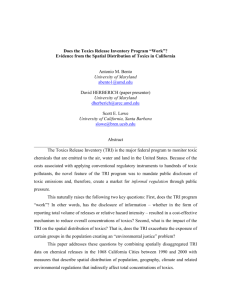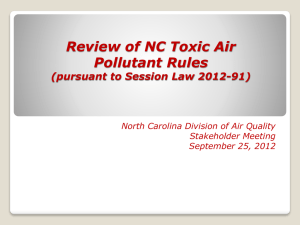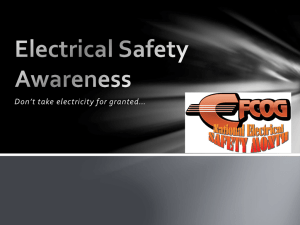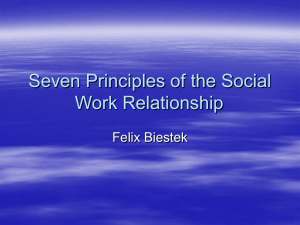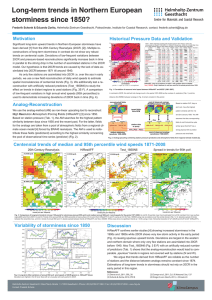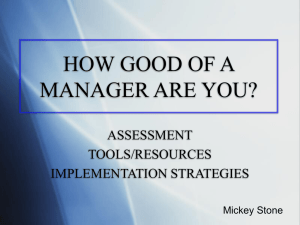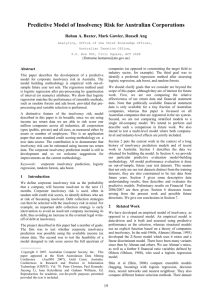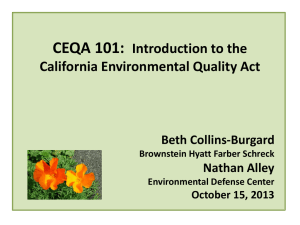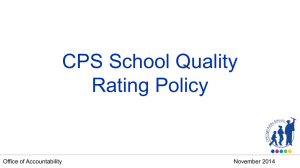Complying with Regulations from California`s Office of
advertisement
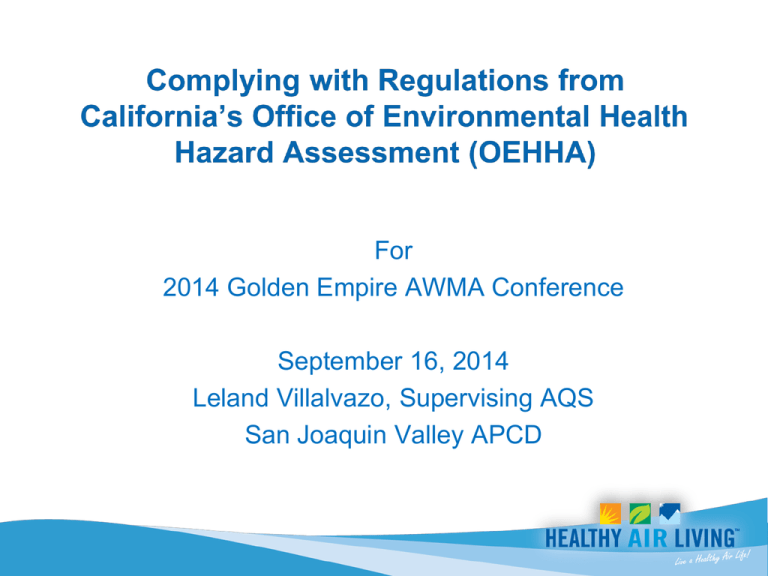
For 2014 Golden Empire AWMA Conference September 16, 2014 Leland Villalvazo, Supervising AQS San Joaquin Valley APCD • 2008 OEHHA started work on revisions – Included updates to the non-cancer health effects, cancer potency factors, and exposure assessment procedures – Approved by SRP – Largely aimed at providing additional protections for children • “Air Toxics Hot Spots Program Guidance Manual for Preparation of Health Risk Assessments” forms the basis by which HRAs are performed in California: – AB2588 – CEQA – Permitting health risk assessments • Minimize health risk from new and modified sources of air pollution • Health risk impact from a new and modified source must not be significant • Avoid unreasonable restrictions on permitting • Public has a right to know about existing air toxics risk in their neighborhoods • High risk facilities must reduce risk • • • • • Years of Exposure (30 vs. 70 years) Age Groups(Bins) Age Sensitivity Factors (ASF) Breathing Rates Chronic Reference Exposure Levels (8hour) • Fraction of Time at Home • Worker Exposure Duration (25 vs. 40 years) • Worker Modeled Concentration Adjustment • Dispersion Model Change (EPA’s AERMOD) • Spatial Averaging • Poly Aromatic Hydrocarbons (PAH), Creosotes & Lead Age Groups (Bins) Current Method Proposed Method Age Group Age Group 3rd Trimester – 0 years 0 – 70 years (Resident) 0<2 years 2<9 years 0 – 9 years (Children) 2<16 years 16<30 years 40 years (Worker) 16-70 years Age Sensitivity Factors Current Method Age Group Proposed method Age Sensitivity Factor Age Group Age Sensitivity Factor 3rd Trimester – 0 year 10 0<2 years 10 2<9 years 3 2<16 years 3 16<30 years 1 16-70 years 1 0 – 70 years (Resident) 0 – 9 years (Children) 1 40 years (Worker) Long-Term Daily Breathing Rate (L/kg-day) By age Bin Method Group Measure 3rd Trimester Current Adult 95th pctl. Adult 80th pctl. 0<2 2<9 2<16 16<30 16-70 393 NA 302 Children 581 NA Mean 225 658 535 452 210 185 95th pctl. 361 1090 861 745 335 290 80th pctl. 273 758 631 572 261 233 Mean 170 890 470 380 170 170 Worker / Children 95th pctl. 240 1200 640 520 240 230 Adult 95th / 80th pctl.* 361 1090 631 572 261 233 Adult Proposed Fraction of Time at Home Current Method Age Group Proposed method Fraction of Time at Home Age Group Fraction of Time at Home 3rd Trimester - 0 0 – 70 years (Resident) 0.851 0<2 years 2<9 years 0 – 9 years (Children) 0.721 1 2<16 years 16<30 years 40 years (Worker) 0.730 16-70 years Reduction in Ambient Risk 3000 Cancer Risk In a Million 2500 2000 Current Risk 1500 New OEHHA 1000 500 0 1990 1991 1992 1993 1994 1995 1996 1997 1998 1999 2000 2001 2002 2003 2004 2005 2006 2007 2008 2009 2010 2011 2012 Years Ambient Air Cancer Risk, San Joaquin Valley (The California Almanac of Emissions and Air Quality, CARB, 2009) • Permitting of stationary sources – BACT for toxics (T-BACT) at above 1 in a million – Will not issue permits if facility’s cumulative increase in risk is above 10 in a million • California Environmental Quality Act (CEQA): – 10 in a million defined as significant • Air Toxics “Hot Spots” Act (AB2588): – Public notification of significant risk facilities at 10 in a million – Risk reduction required if over 100 in a million • Incorporate OEHHA’s Risk Assessment Guideline updates designed to provide protection of infants and children • Permitting and CEQA – Adjust thresholds as necessary to prevent unreasonable restrictions – No relaxation of current health protections (no increase in actual air toxics exposure, compared to current policies) • Air Toxics “Hot Spots” – Enhance public right-to-know and health protections by retaining current notification and risk-reduction thresholds • Incorporate all possible streamlining efforts in incorporating OEHHA updates • Develop effective outreach tools and processes to communicate changes to all interested parties

